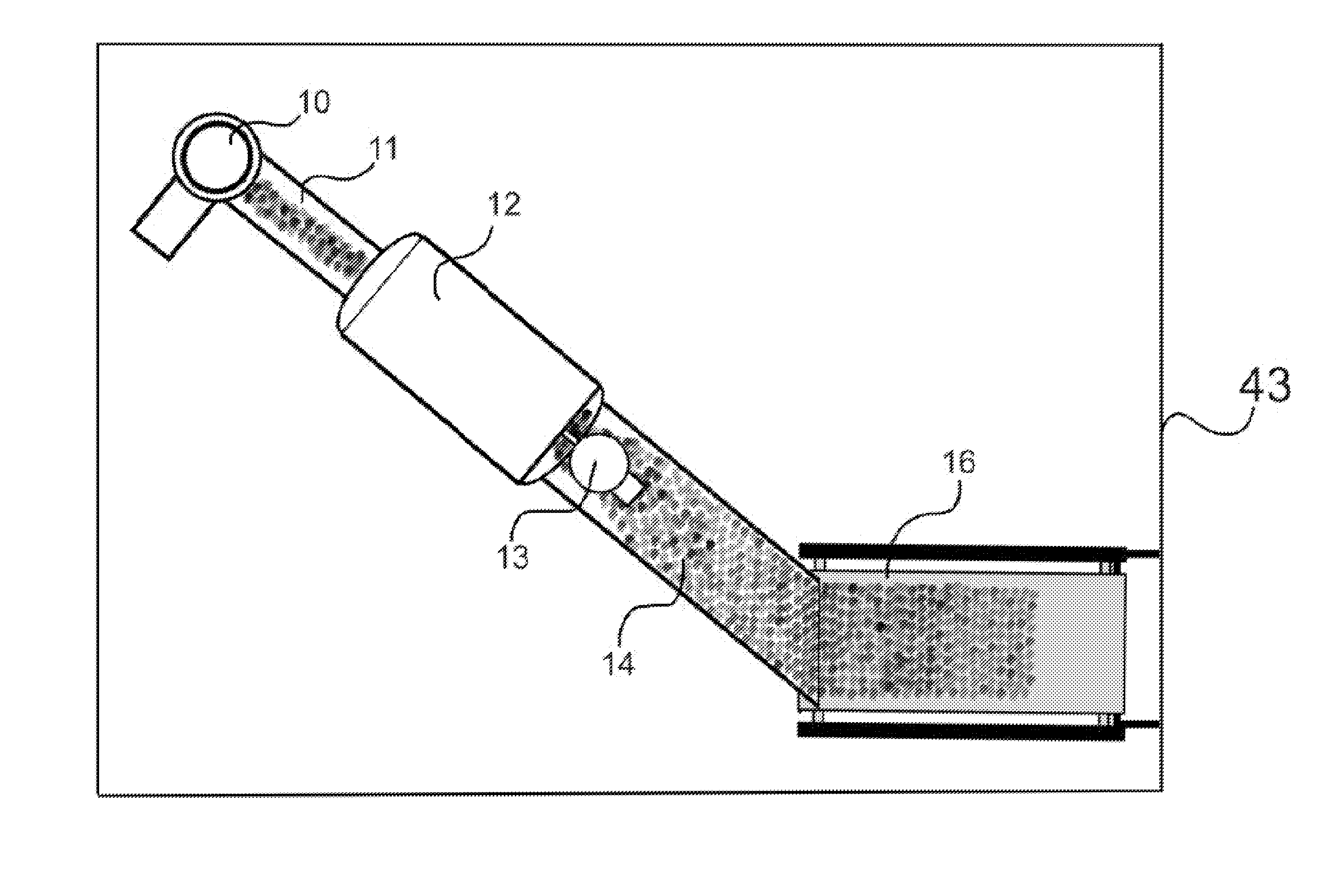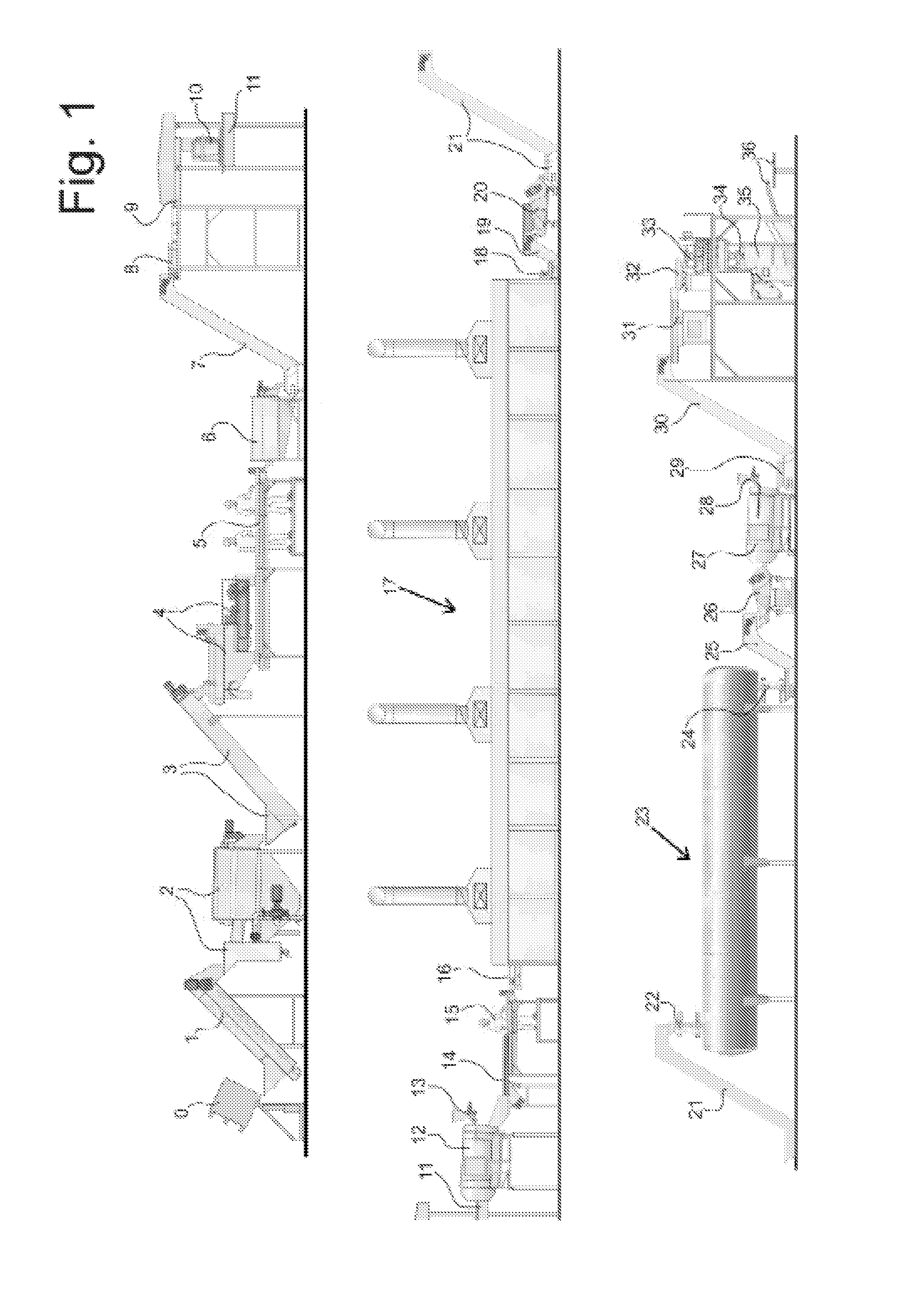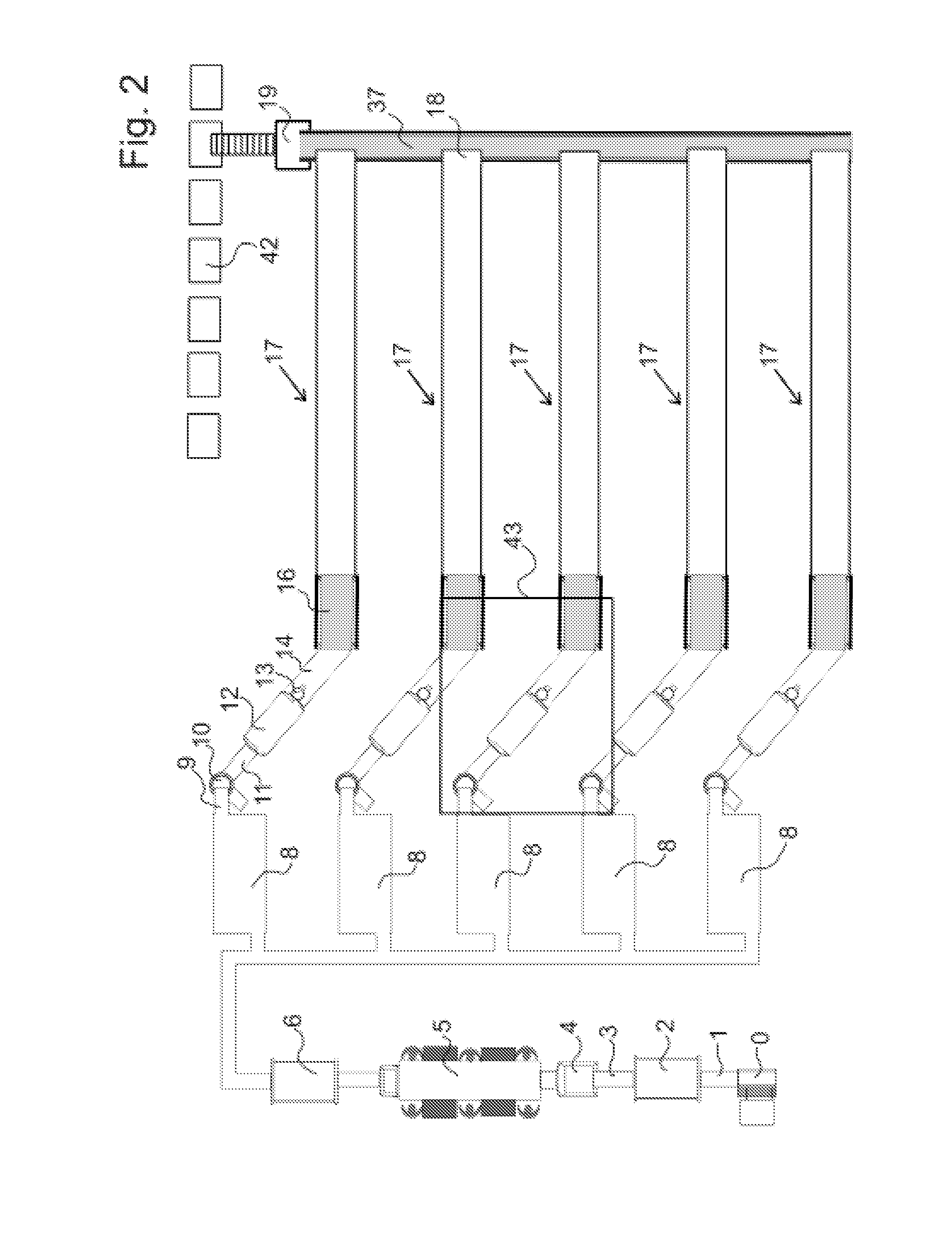Method and apparatus for the preparation of a crisp food product
a technology for crisp food and crisp products, applied in the field of snack food processing, can solve the problems of unfavorable processing, unhealthy and unappetising food products, and process that is completely unsuitable for high sugar content fruits and vegetables
- Summary
- Abstract
- Description
- Claims
- Application Information
AI Technical Summary
Benefits of technology
Problems solved by technology
Method used
Image
Examples
Embodiment Construction
[0045]The apparatus and process of the present invention is described below with reference to the drawings.
FIG. 1
[0046]FIG. 1 shows a diagrammatic overview of a system or apparatus and a process for manufacturing snack food products according to the present invention, the process being continuous, but shown here in three consecutive lines, for the sake of illustration.
[0047]Raw material is received by means of a bin 0 that is lifted up into the storage hopper with conveyor 1. The raw material can be washed, semi-washed or unwashed when received and can include any selection from various vegetables.
[0048]Typical vegetables for use as raw materials in the process are: potato (including its cultivars such as B1, B13, van der Plank, Up-to-Date, Rosetta, Hertha, Undumbi, Congo Blue), sweet potato, parsnip, butternut, beetroot, mangle, sugar beet, carrot, zucchini, onion, sweet peppers, chilli, tomato, celeriac and pumpkin—each with its various cultivars. The selection of the vegetable ra...
PUM
 Login to View More
Login to View More Abstract
Description
Claims
Application Information
 Login to View More
Login to View More - R&D
- Intellectual Property
- Life Sciences
- Materials
- Tech Scout
- Unparalleled Data Quality
- Higher Quality Content
- 60% Fewer Hallucinations
Browse by: Latest US Patents, China's latest patents, Technical Efficacy Thesaurus, Application Domain, Technology Topic, Popular Technical Reports.
© 2025 PatSnap. All rights reserved.Legal|Privacy policy|Modern Slavery Act Transparency Statement|Sitemap|About US| Contact US: help@patsnap.com



